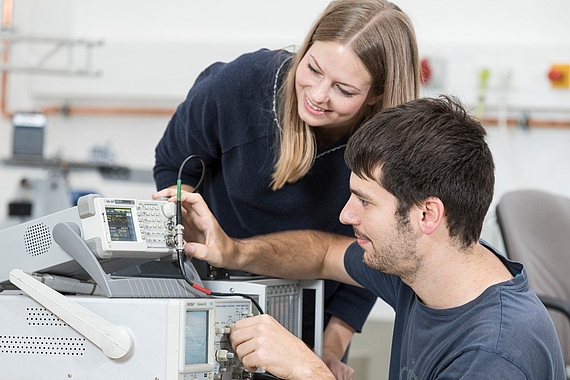
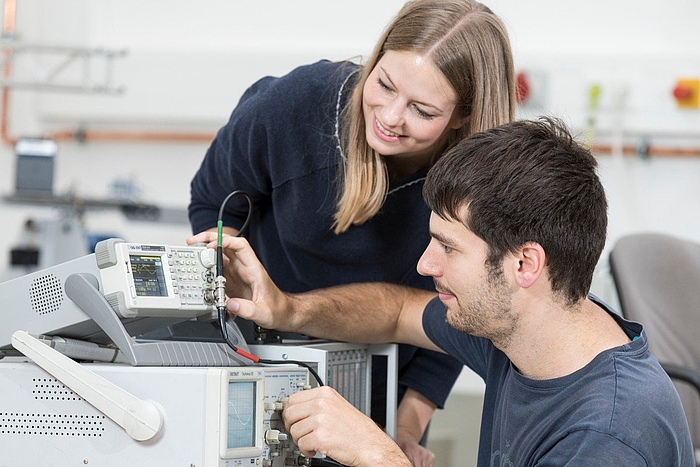
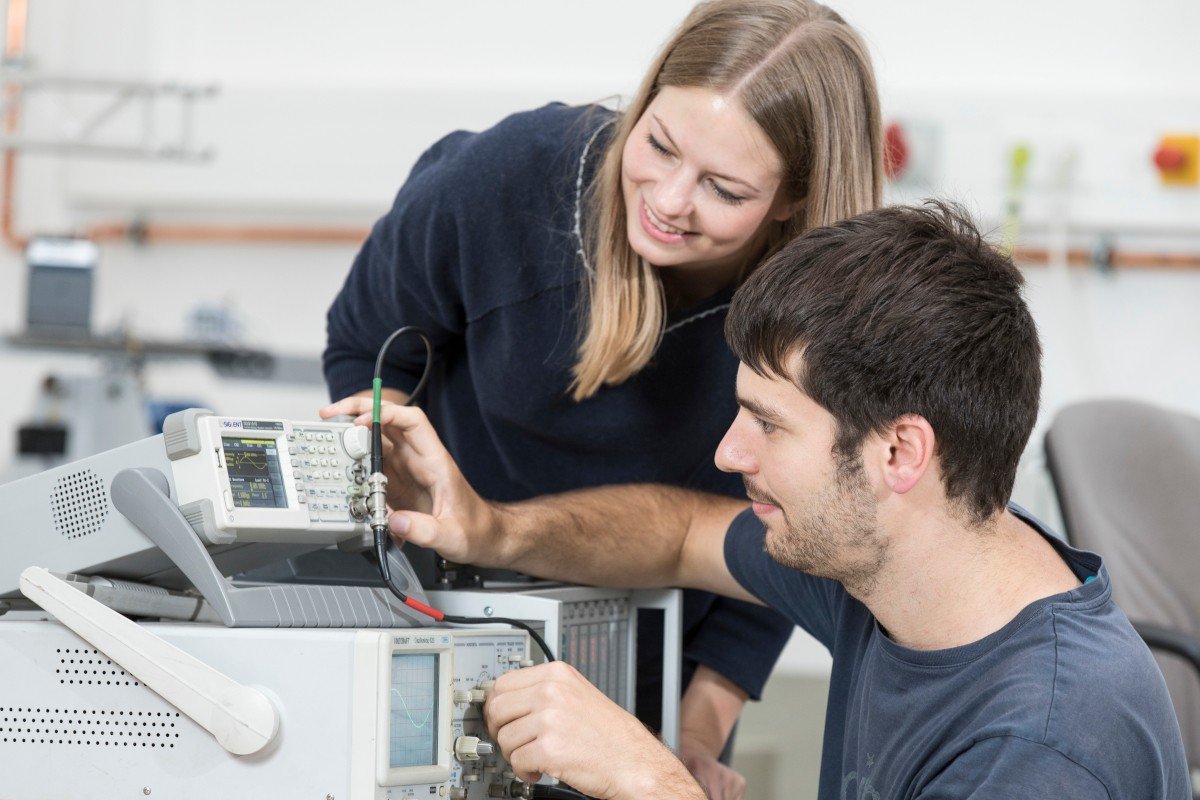 ©
FBG / C. Bierwagen
©
FBG / C. Bierwagen
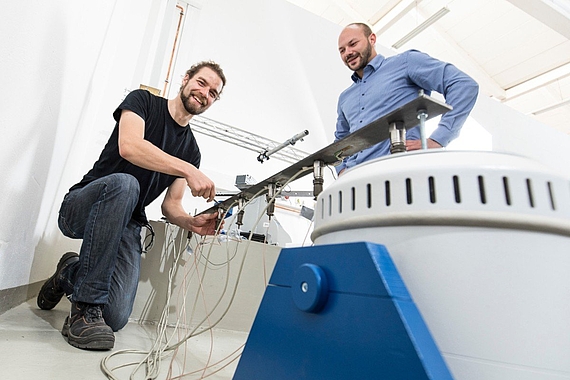
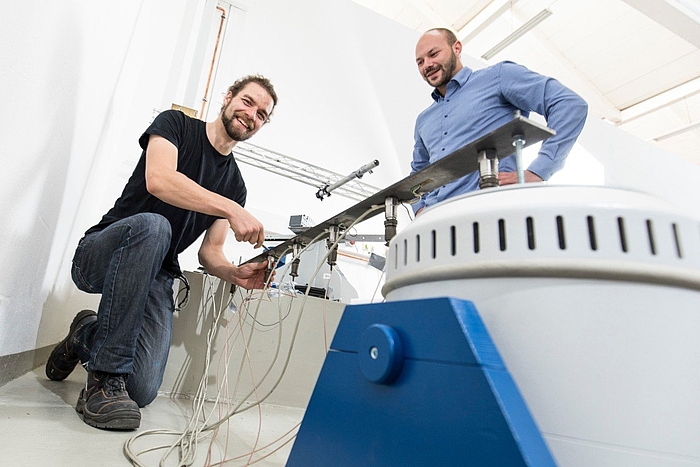
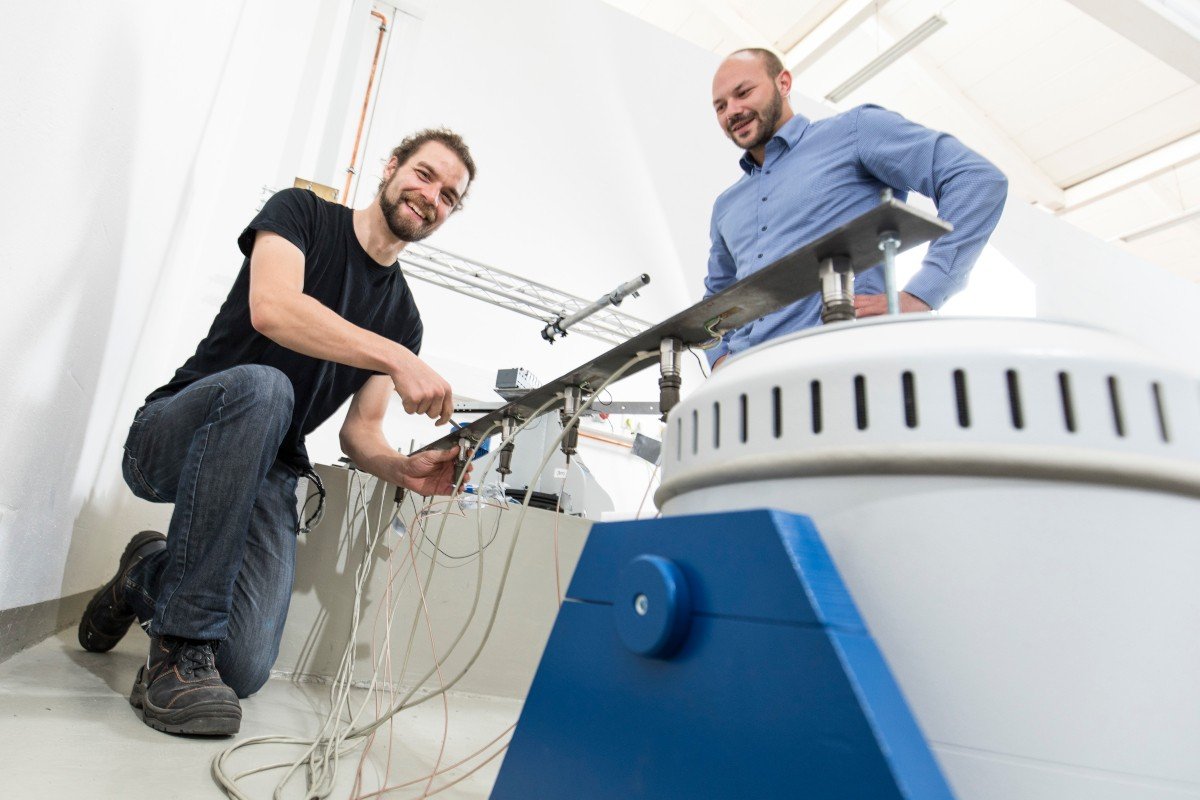 ©
FBG / C. Bierwagen
©
FBG / C. Bierwagen
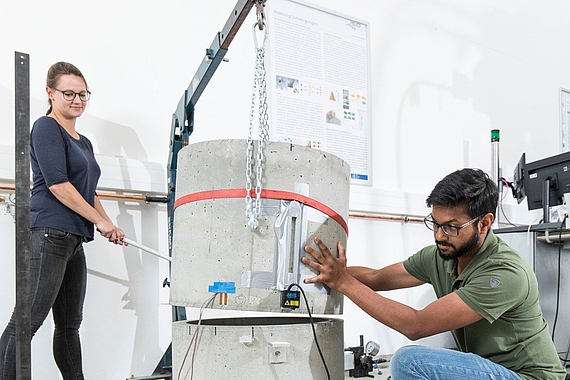
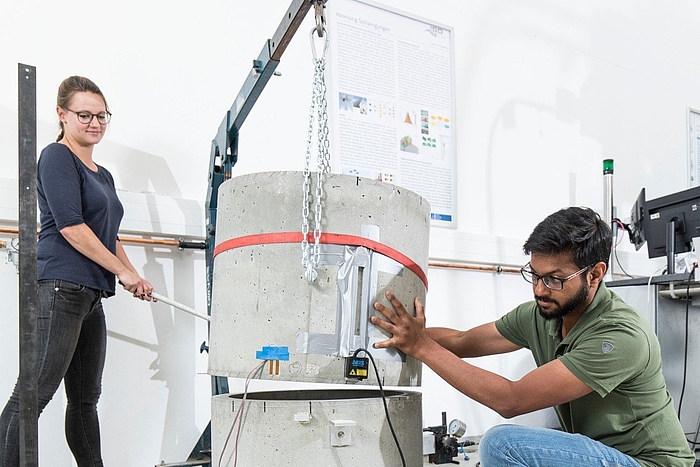
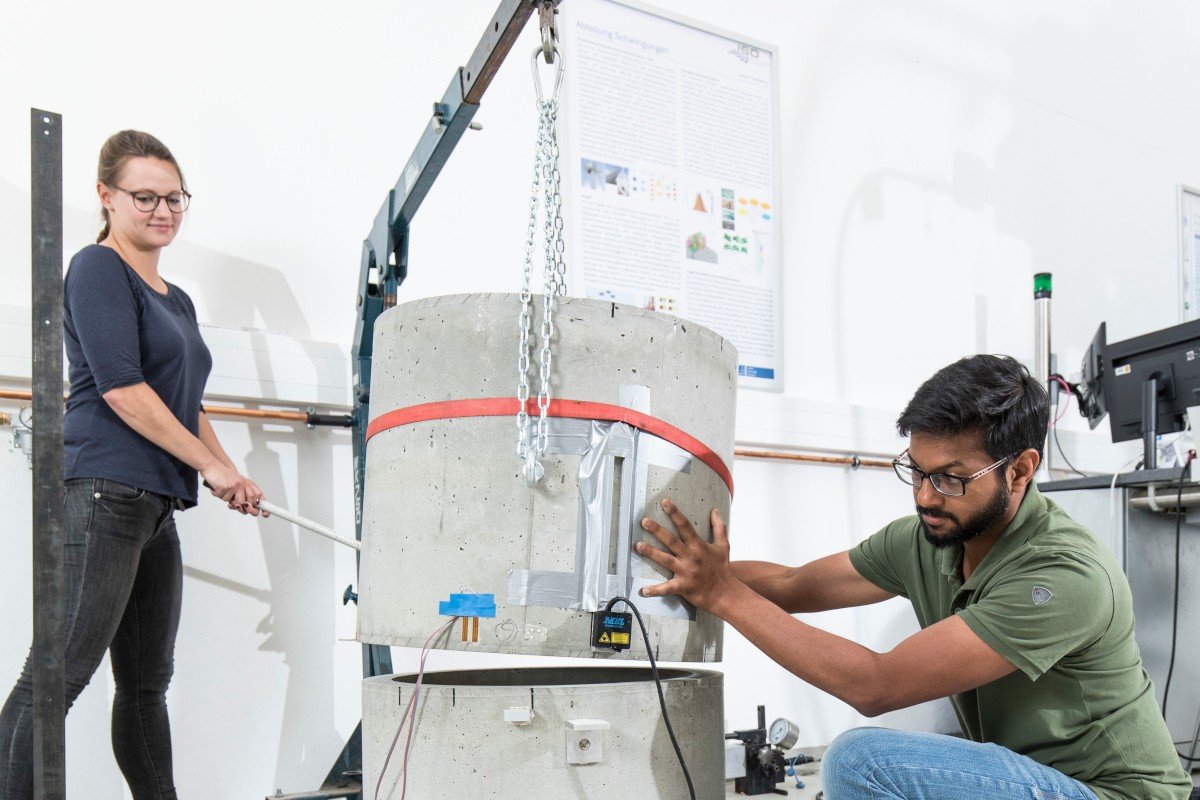 ©
FBG / C. Bierwagen
©
FBG / C. Bierwagen
The Vibrations Department is divided into the following main areas of research:
Structural Health Monitoring
In the field of SHM, research is being carried out on the combination, application, and further development of vibration-based global SHM algorithms, which are applicable to measured data on rotor blades, supporting structures of wind turbines, or civil engineering structures. Essential requirements for all methods are robustness and modularity, as well as considering uncertainties to make a probabilistic statement about the condition of the monitored structure possible.
Machine learning
The group was established to harness the power of cutting-edge machine learning and artificial intelligence techniques, both in their application and in advancing the underlying theory to achieve state-of-the-art performance. The group's research focuses on the application of data-driven methods across various domains, including structural health monitoring of engineering and composite structures. Key areas of interest include fault detection, predictive maintenance, time series prediction, data augmentation, sensor data fusion, and signal processing.
Acoustics
In acoustics, current research focuses on the investigation of atmospheric and topographic conditions on the sound propagation due to operating wind turbines. To this end, numerical forecast models as well as experimental concepts, based on extensive measurements, are being developed to validate both complex numerical models and analytical approaches.
Coupled Dynamic Systems
The development of efficient parameterized simulation models for complex structures under acceptable calculation times is a special challenge from a scientific point of view. In the working group main focus lies in the development of deterministic models and analyses for aero-elastic structures with different nonlinearities and interactions, which use energy-, linear and angular momentum-preserving time integration methods. Both the investigated and developed methods are being implemented into the inhouse-code DeSiO (Design and Simulation Framework for Offshore Support Structures), which is based on multi body systems and the Finite Element method.
Model Update
The research group Model Update focuses on the localization and quantification of damage in structures using model-based structural health monitoring methods. In particular, the consideration of uncertainties in optimization methods is examined to achieve more accurate and reliable results, which aim to improve the reliability and safety, as well as to extend the lifespan, of buildings.
Recent research projects in the vibrations department
Structural Health Monitoring
-
German Research Facility for Wind Energy (DFWind)The project aims to lay the foundation of a research and development platform which concentrates on the usage of wind turbines throughout the entire functional chain in a so far unattained quality. The research is focused on the interaction of the subsystems as part of the overall structure, under consideration of mutual influences of two separate wind turbines and the effect on the integrated network as well. The ISD will be concentrating on intelligent measurement data analysis, Structural Health Monitoring as well as the calculation of coupled dynamical systems.Led by: Prof. Dr.-Ing. habil. Raimund RolfesTeam:Year: 2016Funding: Federal Ministry for Economic Affairs and Energy - FKZ 0325936EDuration: 01.01.2016 – 31.12.2020
![]()
![]() © DLR
© DLR
-
Multivariate Structural Health Monitoring for Rotor BladesEssential goals of the project “Multivariate Structural Health Monitoring for Rotor Blades” are to develop, combine and test global and local SHM methods for rotor blades of wind turbines. In sense of a multivariate procedure, different structure-mechanical and acoustic approaches, which are able to capture different indicators and damage parameters, will be considered. The SHM methods are to guarantee an automated and reliable detection and classification of relevant damages during the early stage.Led by: Prof. Dr-Ing. habil. Raimund RolfesTeam:Year: 2017Funding: Federal Ministry for Economic Affairs and Energy - FKZ 0324157ADuration: 01.03.2017 – 31.12.2020
![]()
![]() © ISD
© ISD
-
Gebrauchstauglichkeit und Komfort von dynamisch beanspruchten Holztragwerken im urbanen mehrgeschossigen Hochbau (DBH)Goal of the research project is the analysis of vibration phenomena of modern urban timber constructions and the development of innovative methods and standards for project planners and developers. In addition, digital measuring data and further results will be published. Due to the increasing demand for wooden buildings in an environment, which is highly dominated by traffic-induced vibrations, the dynamics of multistory buildings become design relevant and more and more urgent. In combination with the sustainability per se of wooden materials, a sufficient planning security establishes the precondition for future multistory buildings to be completely manufactured from wood, which will lead to a more sustainable construction method compared to reinforced concrete. As an outcome, relevant contributions to ensure vibration-dependent comfort characteristics of timber buildings are expected.Led by: Dr.-Ing. Tanja GrießmannTeam:Year: 2018Funding: Deutsche Bundesstiftung Umwelt - Aktenzeichen 34548/01 - 25Duration: 2018- 2021
![]()
![]() © iBHolz, Braunschweig
© iBHolz, Braunschweig
-
Optimierung der Bemessung hybrider Türme und Entwicklung eines geeigneten Monitoringkonzepts (HyTowering)As tower heights continue to rise, hybrid towers made of pre-stressed concrete segments and mounted steel towers are increasingly being used for onshore wind turbines. The risk of instability or damage to the structure increases with height. The subject of the approved research project are large-scale tests on concrete segment towers. It is planned to develop design models and to test monitoring concepts.Led by: Prof. Dr.-Ing. habil. Raimund RolfesTeam:Year: 2018Funding: Federal Ministry for Economic Affairs and EnergyDuration: 01.01.2018 - 31.12.2020
![]()
![]() © ISD
© ISD
-
Quality assured flow production of lightweight UHSC rod elements using artificial neural networksTogether with the Institute of Building Materials Science, ISD is doing research on novel manufacturing processes for components made of ultra-high-strength concrete with a reinforcement of steel sheet and carbon fibres. An innovative extrusion process is used to produce rod-shaped components with a core of ultra-high strength concrete. They are reinforced by a combination of carbon fiber reinforced plastic and sheet steel. A sensor concept is being developed which is capable of monitoring the components "from the birth of the component". Various heterogeneous measurement data are used to control and monitor the extrusion process by means of an artificial neural network, so that a consistently high quality of the components can be guaranteed.Led by: Prof. Dr.-Ing. habil. Raimund RolfesTeam:Year: 2019Funding: Deutsche Forschungsgemeinschaft (DFG) - Projektnummer 402702316Duration: 2019 - 2022
![]()
![]()
-
SONYA: Increasing the reliability of segmented rotor blades through Hybrid condition monitoringThe aim of the project is to ensure the reliability of future, complex rotor blades with new structural technologies through targeted and reliable monitoring of the structural condition and to increase the overall availability of the plant. The research focus is on the development and application of a hybrid, intelligent structural monitoring system using the example of a highly loaded joint from a segmented rotor blade. This system will combine independent component monitoring systems (ultrasonic and strain-based) into a hybrid system, thereby increasing the reliability and accuracy of damage detection. For this purpose, it is particularly necessary to avoid false positives of the monitoring system. In this context, the ISD will deal with the application of machine learning methods for the hybrid SHM system when evaluating the measurement data.Led by: Prof. Dr-Ing. habil. Raimund RolfesTeam:Year: 2020Funding: Bundesministerium für Wirtschaft und Energie - Projektnummer 60451751Duration: 01.07.2020-30-06-2023
![]()
![]() © DLR
© DLR
Acoustics
-
From the source to the perceptionIn the project WEA-Akzeptanz an interdisciplinary approach will be followed, which links the physical sound generation, radiation and propagation with the perception at the immission site. In cooperation with the industrial partner Senvion, the IKT and the IMUK of the Leibniz Universität Hannover, an acoustic overall model will be developed comprising the sound generation at the wind turbine, the sound propagation to the receiver under realistic atmospheric conditions and a perception model.Led by: Prof. Dr-Ing. habil. Raimund RolfesTeam:Year: 2017Funding: Federal Ministry for Economic Affairs and Energy - FKZ 0324134ADuration: 01.04.2017 – 30.11.2020
![]()
![]() © ISD
© ISD
Coupled Dynamic Systems
-
Dynamical behavior and strength of structural elements with regeneration induced imperfections and residual stresses (SP B4 "Stochastic Structural Analysis" of CRC 871)Real components comprise regeneration induced imperfections (geometry, material and residual stresses), that affect the structural behavior significantly. For the application example of the complex capital good of a compressor blisk, the regeneration influence is quantified in the starting dynamics and durability. The bases for the necessary probabilistic structural analysis are efficient computation approaches. Finally, an evaluation of the possible regeneration paths (competing and non-competing) is performed.Led by: Prof. Dr.-Ing. habil. Raimund RolfesTeam:Year: 2014Funding: German Research Foundation (DFG)Duration: 2010-2021
![]()
![]() © ISD
© ISD
-
Joint research for raising the efficiency of wind energy converters within the energy supply system (ventus efficiens)The research project focuses the efficiency of wind energy converters within the energy supply system. Although the production, installation and operation procedures of these are on a high level, a continuous raise of their efficiency is indispensable. Only with a constant raise in efficiency, costs of electricity can be reduced distinctly. For wind energy, this is of special interest due to the essential role that it will have in Europe’s future energy supply.Led by: Prof. Dr.-Ing. habil. Raimund RolfesTeam:Year: 2015Funding: Ministry for Science and Culture of Lower SaxonyDuration: 01.12.2014 - 31.12.2019
![]()
![]() © ForWind
© ForWind
-
Precise measuring system for contactless recording and analysis of the dynamic flow behaviour of wind turbine rotor blades (PreciWind)Within the framework of the PreciWind project, a mobile thermographic measuring system for the continuous recording and analysis of the dynamic flow behaviour of rotor blades on wind turbines in operation is being developed. With the system developed for use on operational turbines in wind parks, the aerodynamic performance of wind turbines in operation can be quantified and evaluated. The analysis of the boundary layer flow conditions is carried out with a geometrically high-resolution infrared camera in the long-wave radiation range. In combination with a laser distance measuring system to record the rotor blade distance and geometry, the measuring system is fixed on a co-rotating measuring system carrier in order to examine the flow behaviour during a complete revolution of the rotor for the first time. This arrangement enables the compensation of the relative movements between the measuring system and the wind turbine rotor and at the same time enables an analysis of the structural dynamics of the wind turbine due to changing force effects within a rotor revolution. Using a mobile power supply, measurements can be carried out in real wind park conditions from distances of up to 300 m to the wind turbine. The main task of the ISD is to numerically investigate the full measuring activities by applying the concept of a digital twin. A virtual image of the wind energy turbine and the entire measurement system will be designed in detail. To determine effective positions and adjustments of the measurement system, various simulations under different environment conditions will be performed. A validation of the simulations is carried out using high-quality measurement data.Led by: Prof. Dr-Ing. habil. Raimund Rolfes, PD Dr.-Ing. habil. Cristian Guillermo GebhardtTeam:Year: 2020Funding: Bundesministerium für Wirtschaft und Energie - FKZ 03EE3013BDuration: 01.01.2020 – 31.12.2022
![]()
![]() © BIMAQ
© BIMAQ
Uncertainty
-
Efficient modelling of wind turbines in time-domain considering uncertain parameters (ENERGIZE)Wind energy is a promising technology to achieve the objectives set for the development of renewable energy. To increase competitiveness, costs have to be reduced and the structural reliability has to be improved. A promising approach are more realistic simulations of wind turbines by considering polymorphic uncertainty. In this context, uncertainty is, for example, variability, incompleteness, and inaccuracy of data. Polymorphic uncertainty can be modelled by using imprecise probability. In research, for classical applications of civil engineering, imprecise probability becomes increasingly popular in recent years. However, for wind turbine applications, there are no approaches that use imprecise probability. The main reason is the complexity of wind turbines that combine challenges regarding uncertain and scattering inputs (typical for civil engineering) and complex controller actions (typical for mechanical and electrical engineering). This complexity leads to high computing times and hinders accurate meta-modelling, that is normally used, if computing times are not manageable. That is why in this project, at first, adequate imprecise probability methods are applied to wind turbine models. Subsequently, the efficiency of the uncertain analysis is increased by reducing the required number of model evaluations. This is the core of this project. First, the increase in efficiency is achieved by using enhanced sensitivity analyses, which can be applied when imprecise probability is utilised. By means of sensitivity analyses, the number of uncertain parameters can be reduced. Second, sampling techniques are developed, which can be combined with imprecise probabilities and load extrapolations for wind turbine fatigue loads. This enables an efficient modelling of complex wind turbines using polymorphic uncertain data. At the same time, computing times are kept manageable. Hence, more realistic simulations are possible.Led by: Prof. Dr.-Ing. habil. Raimund Rolfes, Dr.-Ing. Cristian GebhardtTeam:Year: 2019Funding: Deutsche Forschungsgemeinschaft (DFG)Duration: 2019 – 2022
![]()
![]() © ISD
© ISD
-
Well-founded meta-modeling of wind turbines as an example of stochastic, controlled structures (MetaWind)Smart systems, which mostly come from the field of communication technology and consist of a combination of networked, controllable, sensory and intelligent subsystems, have been omnipresent in media in recent years. Smart systems have actually been around for years in a wide variety of engineering fields. In civil engineering, an example are wind turbines with networked elements of measurement and control technology. For an economical and reliable design of these systems, their simulation is necessary. Due to the non-linear, stochastic, and controlled behaviour of such systems, the required computing time can be uneconomically high. In this case, substitute models, so-called meta-models, can be used to approximate the system behaviour. Although meta-models are already widely used today, their accuracy and efficiency are limited so far. Comprehensive analyses for complex systems are scarce. Therefore, MetaWind addresses this research gap and develops well-founded meta-models for wind turbines based on a comprehensive comparison of different variants.Led by: Dr.-Ing. Clemens HüblerTeam:Year: 2019Funding: Leibniz Young Investigator Grant (LUH)Duration: 2019- 2021
![]()
![]() © ISD
© ISD
-
VIPile – Influence of vibration parameters on the installation and load-bearing behaviour of monopilesThe results of the first two rounds of auctions for German offshore wind farms with commissioning from 2021 to 2025 illustrate the necessity of exploiting further cost reduction potentials in order to realise these future projects within the targeted cost ranges. One possibility is the use of vibratory pile driving as an environmentally friendly and cost-effective construction method for the realisation of further expansion plans for offshore wind energy in Germany. The VIPile project pursues the overall goal of developing validated simulation models for predicting the load-bearing behaviour of vibrated monopile foundations by means of large-scale experiments and numerical simulations. This aims at enabling an economic evaluation and reducing the corresponding risks during project realisations. In addition, a simplified, less computationally intensive, linearized soil-structure interaction model will be developed, which can be integrated into fully coupled aero-elastic wind turbine simulations. This simplified model will be derived from the previously developed detailed models and validated with the help of dynamic measurements. The focus of the ISD is on the simplified soil-structure interaction model.Led by: Prof. Dr.-Ing. habil. Raimund Rolfes, Dr.-Ing. Clemens HüblerTeam:Year: 2020Funding: Bundesministerium für Wirtschaft und Energie - FKZ 03EE3022Duration: 01.08.2020 – 31.07.2023
![]()
![]() © ISD
© ISD
-
Transdisciplinary end-of-life analysis of wind turbines for the development of technically and economically optimal end-of-funding strategies (TransWind)Wind energy is an important pillar for achieving the energy transition in Germany. Electricity generation costs are still high in relation to market compensation, so that there is a need for development. Hence, the end-of-life topic of wind turbines - i.e. the analysis and design of the period after the end of the funding by the “Erneuerbare Energien Gesetzes” (EEG) or after the design lifetime has been exceeded – is currently of particular interest. To develop technically and economically sustainable strategies for post-EEG wind turbines, a joint and at least partly coupled consideration of different aspects of structural dynamics, logistics, spatial planning, and economics is indispensable. For example, it only makes sense to analyse the economic feasibility of continued operation by retrofitting if this is also technically possible. Therefore, within TransWind project, a probabilistic, structural-dynamic model of a wind turbine will be combined with site-specific wind simulations, spatial planning tools and economic analyses in an integrated modelling approach. To enable the automated application of this transdisciplinary approach, the modelling approach will be implemented in a software solution, and thus, takes advantage of the increasing digitalisation of the energy industry. The focus of the ISD is on the structural-dynamic, probabilistic lifetime calculations.Led by: Dr.-Ing. Clemens Hübler, Prof. Dr-Ing. habil. Raimund RolfesTeam:Year: 2020Funding: Federal Ministry for Economic Affairs and Energy - FKZ 03EE3029ADuration: 01.11.2020 – 31.10.2023
![]()
![]() © WIV GmbH
© WIV GmbH






































